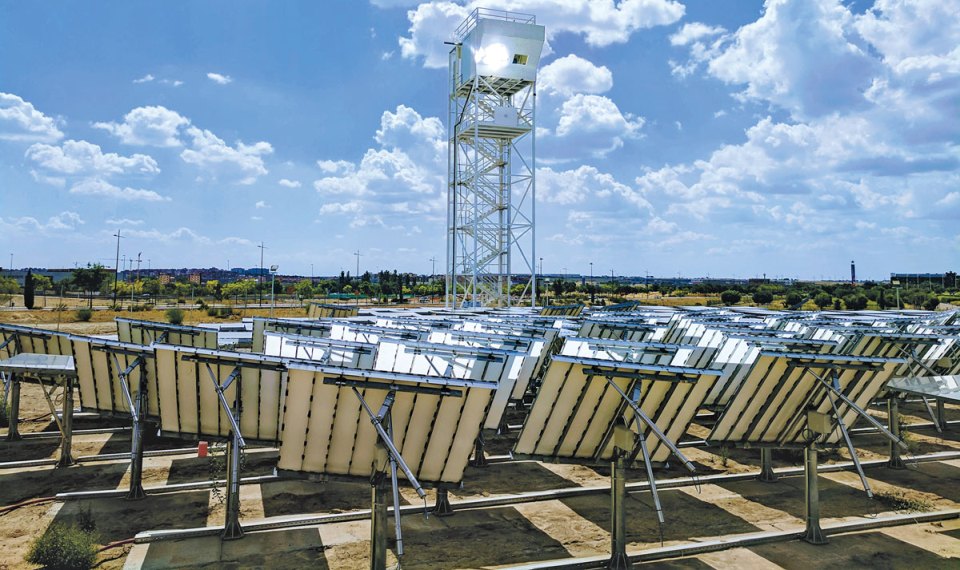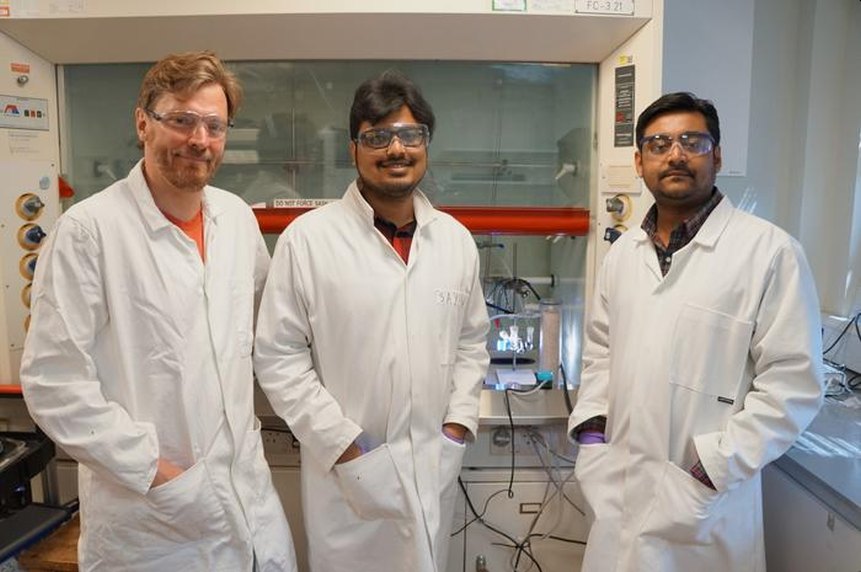This dual solar-powered reactor converts plastic waste and CO2 ‘from thin air’ into sustainable fuels

The aviation industry currently contributes approximately 3% of the world’s greenhouse gas emissions. To mitigate its climate impact, a viable solution lies in transitioning to sustainable aviation fuels. However, although there have been significant breakthroughs in laboratory settings for producing the kerosene precursor known as syngas sustainably, implementing these complex processes on an industrial scale has proven to be quite difficult.
In response to this challenge, a team of researchers from the University of Cambridge and the Swiss Federal Institute of Technology (ETH), Zurich, has developed an innovative process. Their goal is to recycle atmospheric carbon dioxide (CO2) and transform it into sustainable aviation fuel, ultimately working towards a future with net-zero carbon emissions.
The researchers achieved this by utilizing a solar-powered reactor, which facilitated the conversion of CO2 into sustainable fuel. This CO2 was obtained from industrial waste or even directly from the air. By harnessing sunlight, the reactor transformed CO2 into a precursor known as CO + H2, which is crucial for the production of liquid fuel in industrial settings.
Furthermore, the team aimed to integrate the recycling of waste plastics into their process to mitigate the environmental harm caused by such materials. Consequently, the reactor also upcycled waste plastics into a valuable commodity chemical called glycolic acid, simultaneously addressing the issue of plastic waste.
In a separate research endeavor, a group of scientists at the Swiss Federal Institute of Technology (ETH), Zurich, has developed a unique process that utilizes concentrated sunlight to thermally oxidize carbon dioxide (CO2) and water, generating syngas with the aid of a catalyst called cerium oxide.
This syngas is then further converted into kerosene using established techniques. The team, led by ETH Zurich engineer Aldo Steinfeld, constructed a concentrator system comprising 169 solar-tracking mirrors that focus sunlight onto a 16 cm pinhole located within the reactor. To maximize light exposure, the researchers positioned the reactor on top of a 15-meter tower, slightly angled downward.
The pilot-scale solar fuel reactor, situated near Madrid, is capable of producing jet fuel from just two simple ingredients: carbon dioxide and water. This groundbreaking process, powered by the concentrated heat from a solar concentrator, has the potential to serve as a direct substitute for fossil fuels, offering a sustainable alternative for kerosene production.
Meanwhile, the research team at Cambridge University aimed to address the environmental impact of waste plastics by incorporating their recycling into the process. In addition to converting CO2 into syngas, a crucial component for producing sustainable liquid fuels, the reactor also had the capability to transform plastic bottles into glycolic acid.
This chemical compound is extensively utilized in the cosmetics industry, according to a news release by EurekAlert. Through their tests, the team successfully demonstrated the conversion of both CO2 and plastic waste into valuable resources.
For many years, Professor Erwin Reisner’s research group, based in the Yusuf Hamied Department of Chemistry, has been dedicated to developing sustainable, net-zero carbon fuels inspired by the process of photosynthesis. Their approach involves utilizing artificial leaves to convert carbon dioxide (CO2) and water into fuels, harnessing the power of sunlight.

L-R: Erwin Reisner, Sayan Kar, Motiar Rahaman (Credit: Eurekalert)
While their solar-driven experiments have successfully utilized concentrated CO2 from a cylinder, the practical application of the technology requires the ability to actively capture CO2 from industrial processes or directly from the atmosphere. However, this poses a significant technical challenge, as CO2 is just one of many molecules present in the air, making it essential to develop selective methods capable of efficiently converting highly diluted CO2.
“We’re not just interested in decarbonization, but de-fossilization – we need to completely eliminate fossil fuels in order to create a truly circular economy,” said Reisner. “In the medium term, this technology could help reduce carbon emissions by capturing them from industry and turning them into something useful, but ultimately, we need to cut fossil fuels out of the equation entirely and capture CO2 from the air.”
The researchers drew inspiration from carbon capture and storage (CCS), a technique where CO2 is captured and subsequently stored underground. However, instead of simply storing the captured CO2, they proposed carbon capture and utilization (CCU), which would involve converting CO2 into useful substances rather than burying it underground. This approach would eliminate the need for fossil fuels.
To achieve this, the researchers modified their solar-driven technology to operate with flue gas or directly from the air. This adaptation allows for the conversion of both CO2 and plastics into fuels and chemicals, utilizing only the power of sunlight. By integrating carbon capture and utilization into their process, the researchers aim to create a more sustainable and productive alternative to traditional carbon capture and storage methods.
Meanwhile, the pilot plant reactor developed by the team at the Swiss Federal Institute of Technology is approximately 12 times larger than the previous lab-scale version. Not only was it larger, but it also demonstrated improved efficiency compared to earlier prototypes.
The pilot plant achieved a conversion efficiency of 4%, meaning it converted 4% of the incoming heat energy into syngas, whereas some previous prototypes achieved less than 2%. It is important to note that the overall efficiency of the plant also relies on the efficiency of the mirrors and the syngas-to-kerosene conversion process, which were not the main focus of this particular work, according to Erik Koepf, the R&D technical manager at the DuPont Silicon Valley Technology Center. Koepf contributed to the project while working as a staff scientist at ETH Zurich.
Jing Gu, a professor of inorganic chemistry at San Diego State University, believes that this pilot demonstration of solar fuel technology, at a scale close to industrial operation, indicates that its real-world implementation is not far off. Furthermore, Gu suggests that the data generated by the ETH team could serve as a benchmark for other sustainable syngas systems, helping to determine their readiness for scaling up.
However, in terms of economic feasibility, Steinfeld acknowledges that the 4% efficiency achieved is still too low for industrial use to be economically viable. Nonetheless, he is optimistic that further optimization of the system can raise the efficiency to a more practical level of 15%. One potential solution is the incorporation of a heat-recovery system, which not only improves efficiency but also ensures uninterrupted operation by utilizing stored heat to drive the thermochemical process around the clock, regardless of shadows or passing clouds, as Steinfeld explains.

